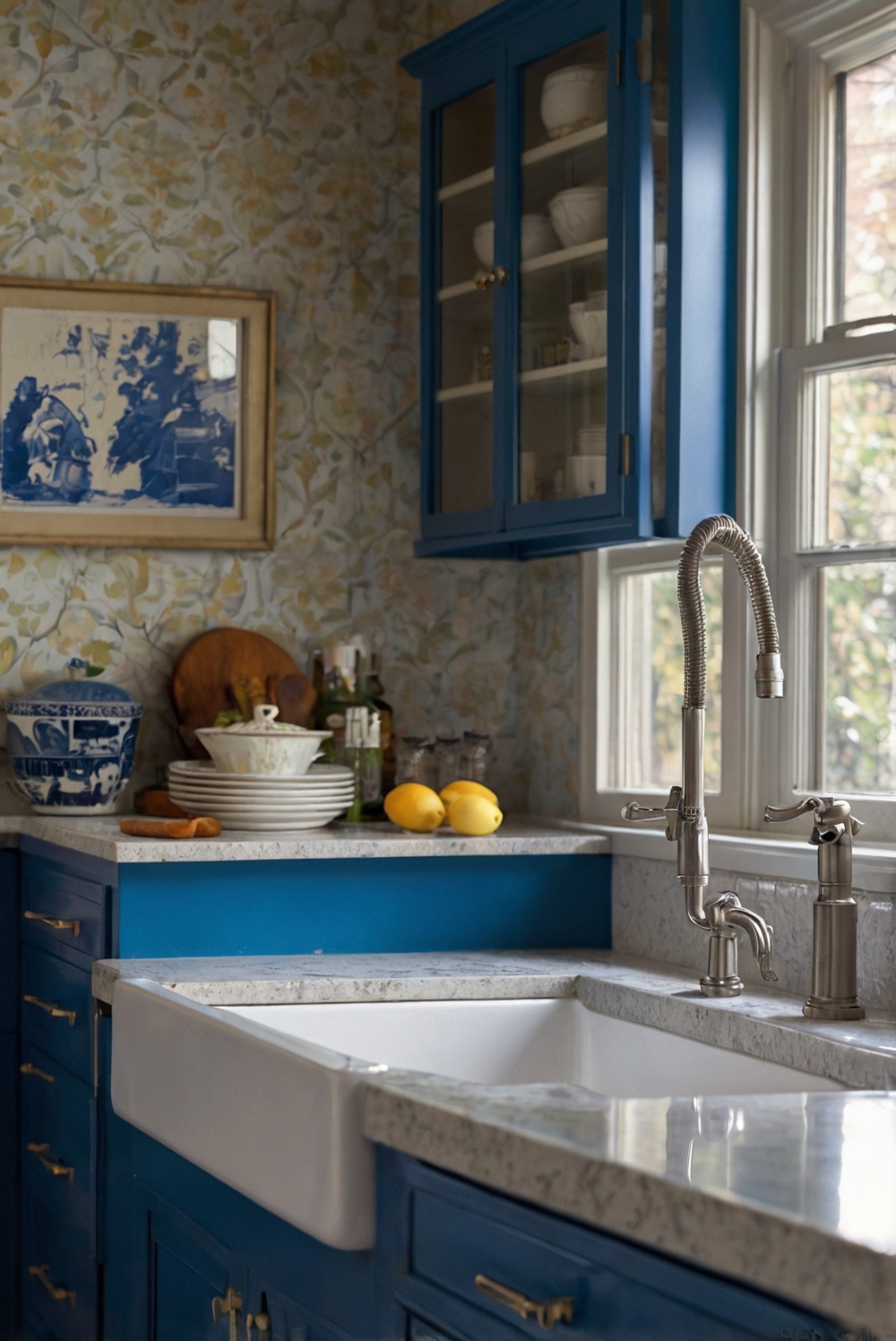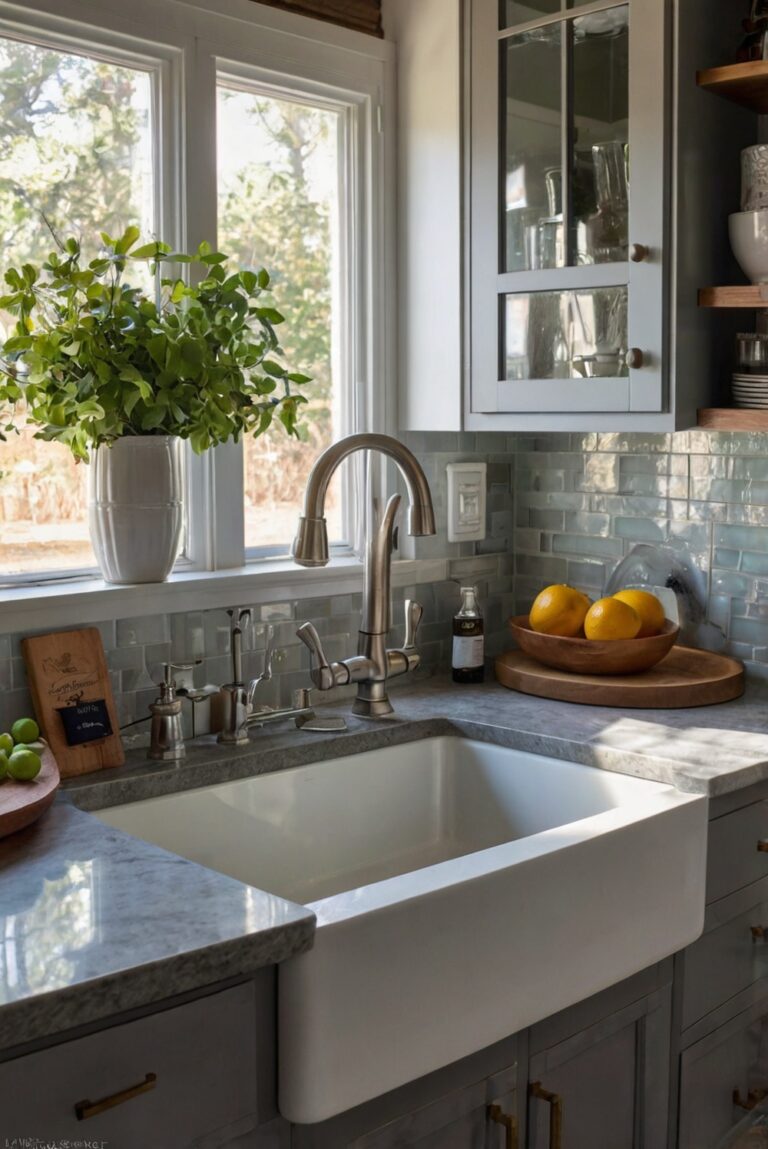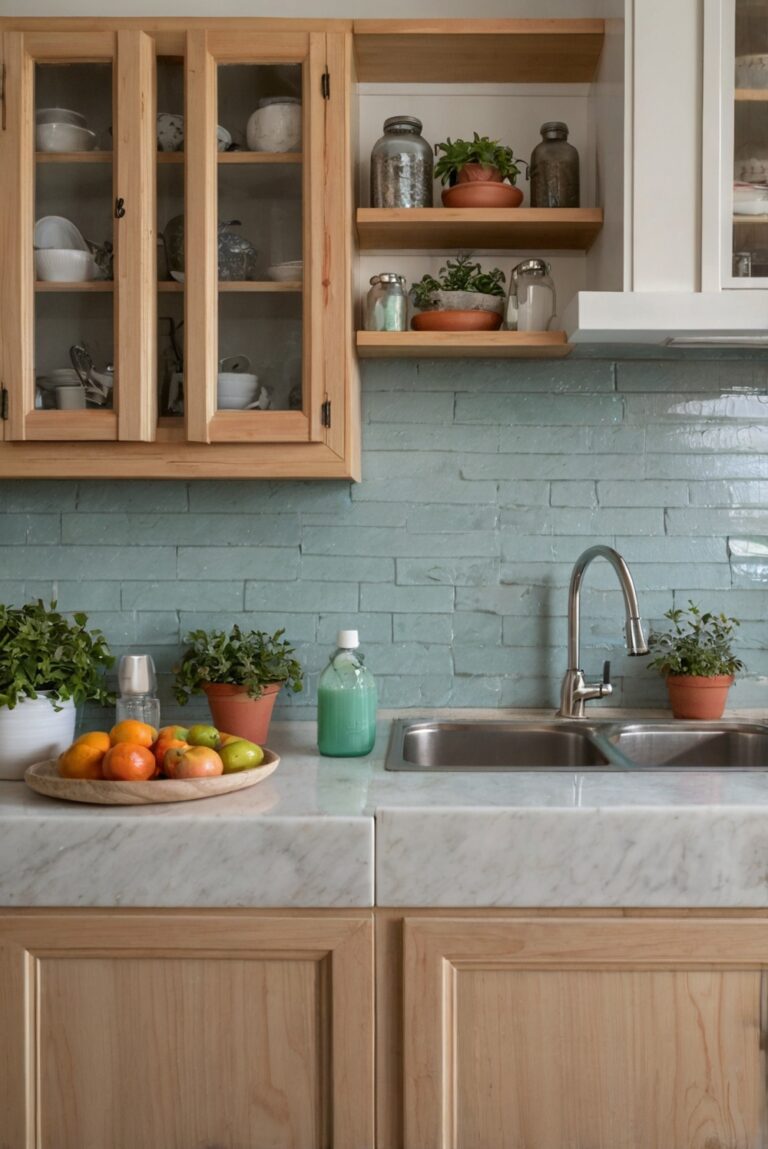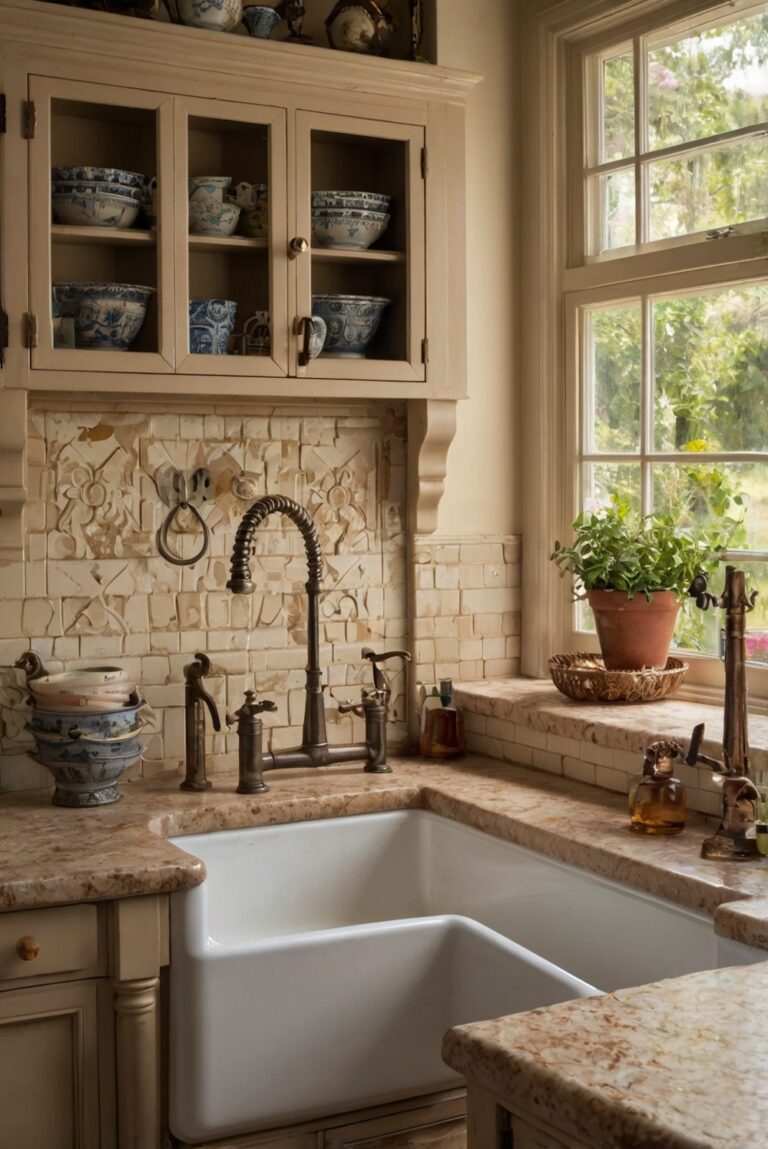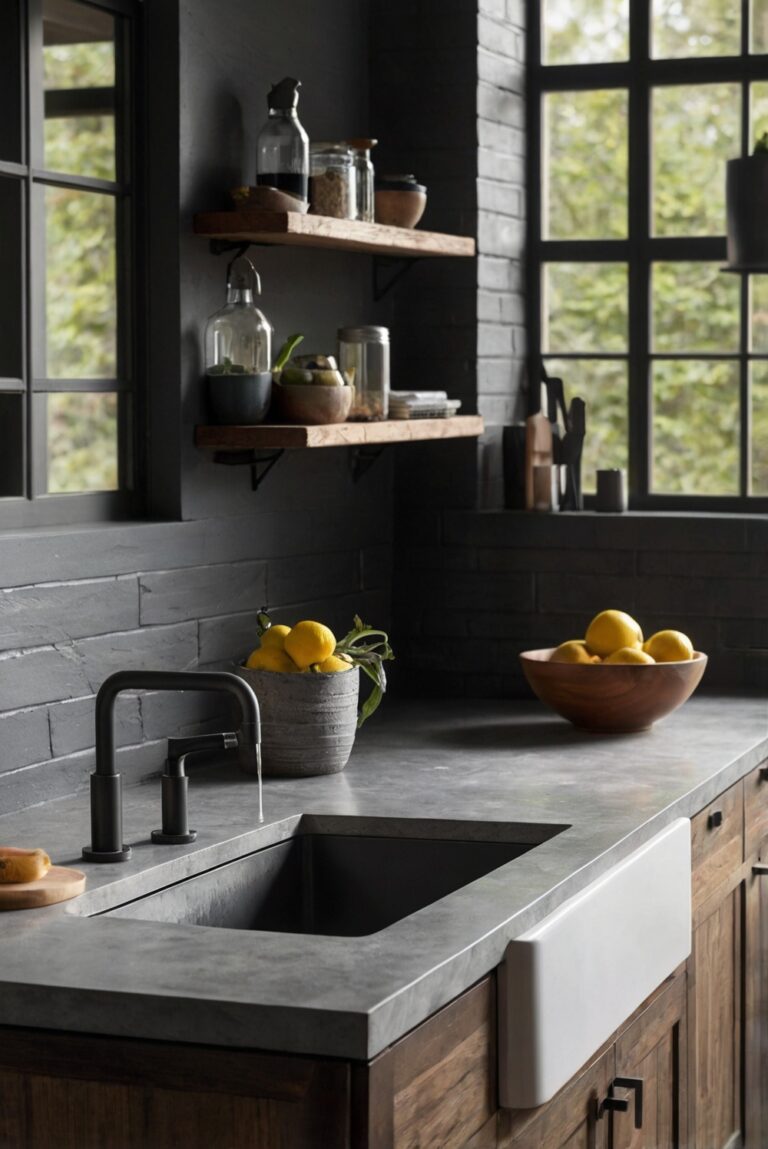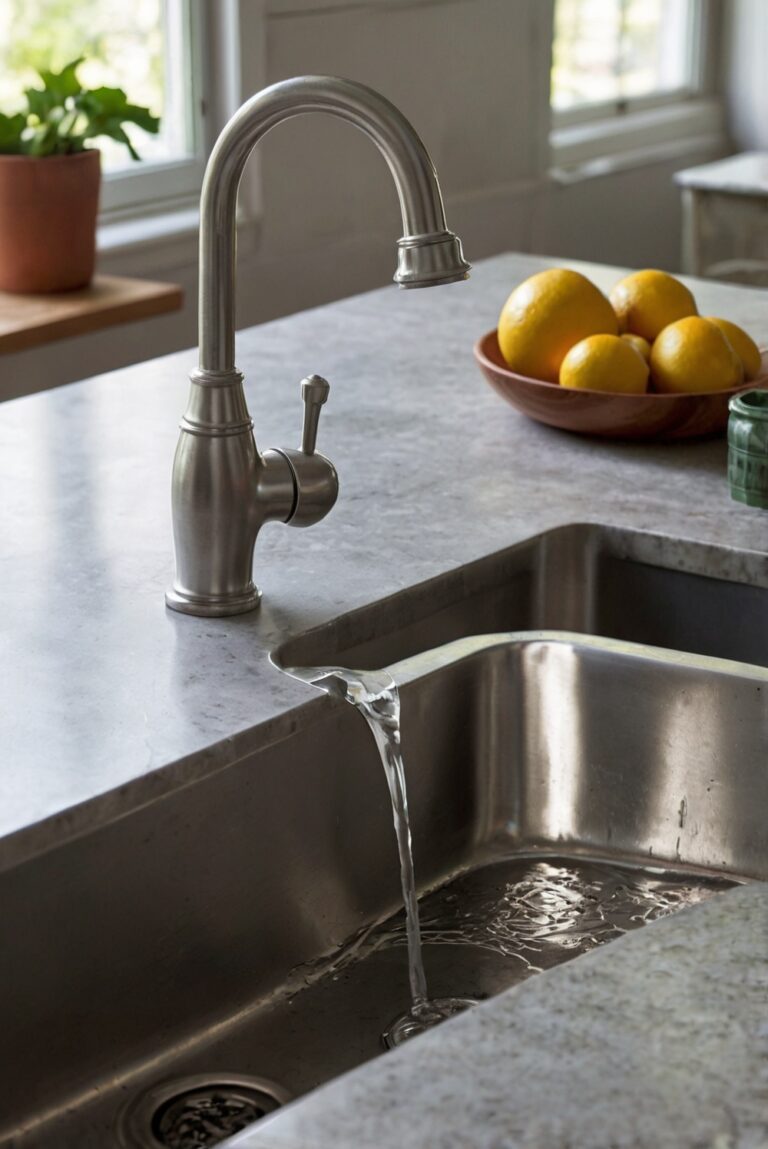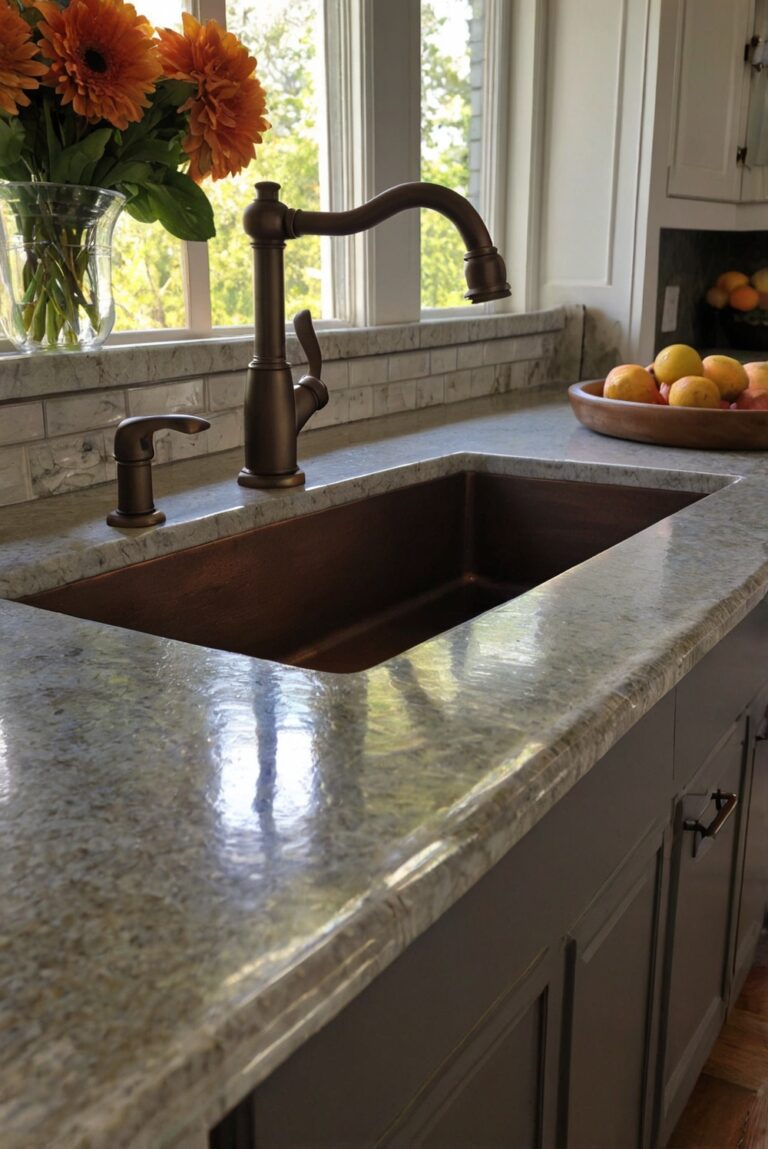Unleash the potential of your kitchen with a deep sink! Discover how to seamlessly incorporate a deep sink into your design for both style and functionality. Explore now!
**How to Incorporate a Deep Sink into Your Kitchen Design?**
Incorporating a deep sink into your kitchen design can greatly enhance its functionality and aesthetics. To seamlessly blend the sink into your space, consider the following tips:
– Opt for a large and deep sink that can accommodate all your kitchen needs.
– Choose a sink material that complements your countertop and cabinetry.
– Install the sink at a comfortable height to prevent back strain while washing dishes.
– Consider adding a pull-down faucet for added convenience.
– Ensure proper ventilation to prevent mold growth in the cabinet below the sink.
– Incorporate a stylish backsplash to tie the sink area with the overall kitchen design.
By following these tips, you can effortlessly integrate a deep sink into your kitchen design while elevating the overall look and functionality of your space.
Why deep sinks are important for your kitchen design?
A deep sink is an essential element in any kitchen design. It offers several benefits that can enhance the functionality and aesthetics of your kitchen space. Deep sinks provide ample space for washing large pots and pans, making meal preparation and clean-up easier and more efficient. They also allow you to fill up the sink with water without splashing, reducing mess and making it easier to wash dishes. Additionally, deep sinks can accommodate oversized items that may not fit in a standard sink, such as baking sheets and cutting boards.
How to choose the right deep sink for your kitchen?
When selecting a deep sink for your kitchen, there are several factors to consider. The size of your kitchen and the layout of your countertops will determine the appropriate dimensions for your sink. Additionally, consider the material of the sink, such as stainless steel, cast iron, or composite granite, based on your preferences and budget. Pay attention to the depth of the sink to ensure it meets your needs for washing large items. Lastly, choose a sink style that complements the overall design aesthetic of your kitchen.
Installation tips for incorporating a deep sink into your kitchen design
Installing a deep sink in your kitchen requires careful planning and execution to ensure optimal functionality and aesthetics. Start by measuring the dimensions of your sink and countertop to ensure a proper fit. Consult with a professional plumber to determine the best location for the sink and to ensure proper plumbing connections. Consider additional features such as a pull-out spray faucet or a sink grid to enhance the functionality of your deep sink. Finally, choose a complementary backsplash and countertop material to complete the overall look of your kitchen design.
Benefits of incorporating a deep sink into your kitchen design
Adding a deep sink to your kitchen design offers numerous benefits that can improve your cooking and cleaning experience. The extra depth of the sink provides more space for washing and soaking dishes, making it easier to keep your kitchen clean and organized. Deep sinks are also ideal for washing large pots, pans, and baking sheets, saving you time and effort during meal preparation and clean-up. Additionally, a deep sink can enhance the overall aesthetics of your kitchen, adding a touch of luxury and sophistication to the space.
Tips for maintaining a deep sink in your kitchen design
Proper maintenance is essential to ensure the longevity and functionality of your deep sink in your kitchen design. Regularly clean the sink with a mild detergent and soft cloth to prevent stains and buildup. Avoid using abrasive cleaners or scrubbing pads that can scratch the sink’s surface. To prevent clogs and odors, periodically flush the sink drain with hot water and baking soda. Consider using a sink protector or mat to prevent scratches and dents from pots and pans. By following these maintenance tips, you can keep your deep sink in top condition for years to come.
1. What are the benefits of incorporating a deep sink into my kitchen design?
Incorporating a deep sink into your kitchen design offers numerous benefits. A deep sink provides more space for washing large pots and pans, making meal preparation and cleanup easier. It also allows you to soak and clean bulky items like baking sheets and roasting pans without creating a mess. Additionally, deep sinks are ideal for washing delicate items like crystal and china as they reduce the risk of breakage. Furthermore, a deep sink can add a touch of elegance and functionality to your kitchen, enhancing its overall design and appeal.
2. How can I choose the right deep sink for my kitchen design?
When selecting a deep sink for your kitchen design, consider factors such as size, material, and style. Determine the dimensions of your sink cabinet and choose a deep sink that fits comfortably within that space. Stainless steel sinks are durable and easy to clean, while fireclay sinks offer a classic, elegant look. Additionally, consider the style of your kitchen – a farmhouse sink may complement a traditional design, while a sleek stainless steel sink may suit a modern aesthetic. Take into account your cooking and cleaning habits to choose a deep sink that meets your needs and enhances your kitchen design.
3. What are some design ideas for incorporating a deep sink into my kitchen?
There are several design ideas for incorporating a deep sink into your kitchen. One popular option is to install a farmhouse sink, which features a deep, apron-front design that adds charm and functionality to the space. Another idea is to choose a double-bowl deep sink, which provides versatility for washing and rinsing dishes. You can also opt for a deep sink with a built-in drainboard, which offers additional workspace for drying dishes or prepping food. Consider pairing your deep sink with a pull-down faucet for added convenience and style in your kitchen design.
4. Are there any specific considerations to keep in mind when installing a deep sink in my kitchen?
When installing a deep sink in your kitchen, there are several considerations to keep in mind. Ensure that your sink cabinet is strong enough to support the weight of the deep sink and any additional fixtures. Check the plumbing connections to ensure they are compatible with the new sink and make any necessary adjustments. Consider the height of the sink in relation to your countertop to ensure comfortable use. Additionally, think about the location of your deep sink in the kitchen – placing it near the stove or dishwasher can enhance workflow and efficiency in the space.
5. What are some maintenance tips for keeping a deep sink in good condition?
To keep your deep sink in good condition, follow these maintenance tips. Regularly clean your sink with a mild detergent and soft cloth to prevent stains and buildup. Avoid using abrasive cleaners or scouring pads, as they can scratch the sink’s surface. To prevent water spots and mineral deposits, dry your sink after each use with a clean towel. Periodically check the sink’s drain and disposal for clogs and remove any debris to maintain proper drainage. Consider using a sink protector to prevent scratches and dents from pots and pans. By following these maintenance tips, you can keep your deep sink looking and functioning its best in your kitchen design.

